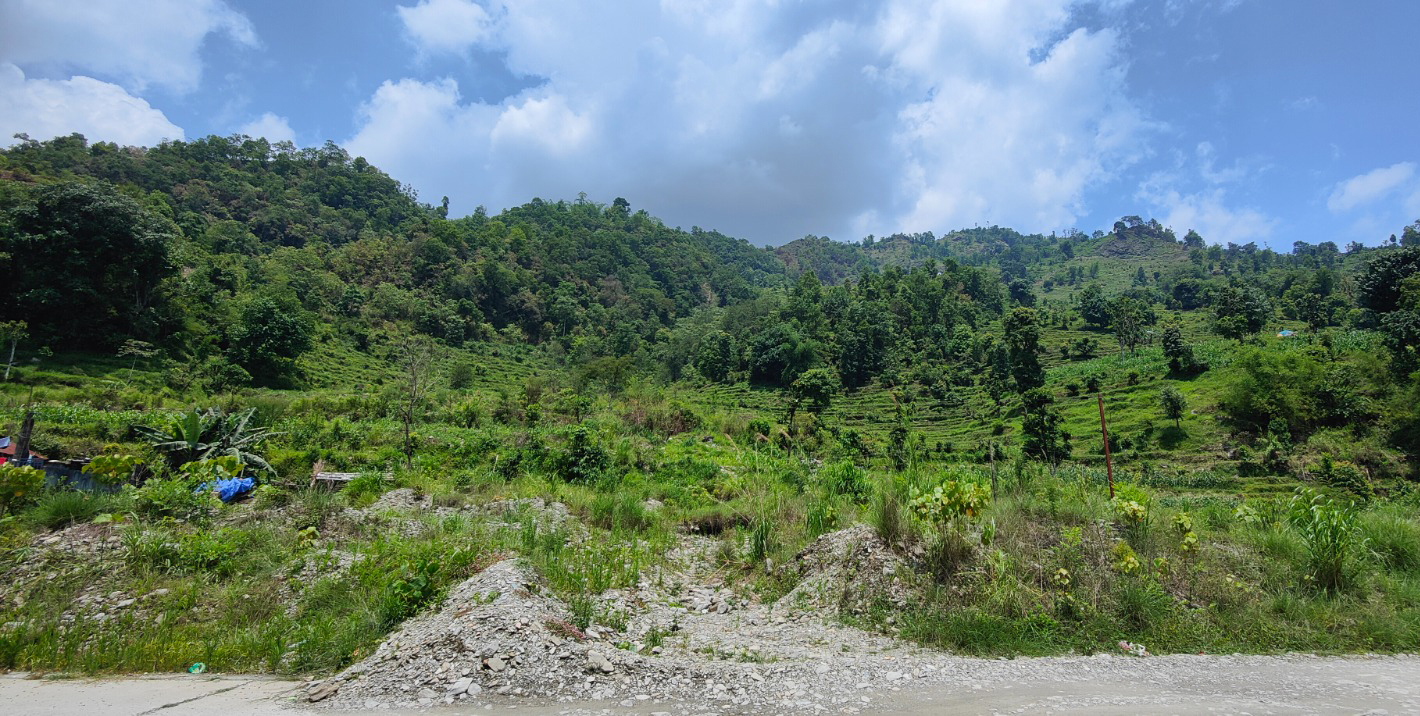The unseen wounds of climate disasters
Ten years after floods devastated a community in Nepal, survivors still cope with mental traumaPhewa Lake in Pokhara used to be much bigger, but it has been shrinking because of the sediment brought down from the surrounding mountains as well as human encroachment.
The slopes above the lake used to be heavily denuded, and there was severe soil erosion because Pokhara Valley gets one of the highest annual rainfall in Nepal. To trap the silt, small dams were constructed across streams that flowed into the lake, but the Community Forestry Program restored the catchment’s lush vegetation reducing sedimentation.
However, there is now a new danger: extreme weather caused by climate breakdown. And it was here exactly 10 years ago on 28 July 2015 that torrential rain over two days killed over 30 people in Kaski district.
Thirteen of them were swept away in a flashflood on the Harpan Khola. But a month later, there was such heavy rain that even the thickly forested mountain above could not prevent a landslide that killed more people.
Teacher at the local school, Arjun BK, lost several of his students in that disaster. The tragedy was so traumatic that it left a deep emotional wound that he carries to this day, a decade later. Returning to the classroom to see the empty desks became too unbearable.
“That’s why I quit my job as a teacher”, BK told us as he showed us around the village which still bears scars of that landslide and flood ten years ago.
Teaching, once a source of joy, became a source of anxiety, grief and frustration. BK showed signs of post-traumatic stress: he would find himself angry, would be cross with his students. Aware of his declining mental health, BK made the difficult decision to leave his job.
BK’s struggle also exposed an aspect of climate breakdown that has not got as much attention: how climate change induced disasters are affecting the mental health of survivors. He then founded Koshish Kaski, an organisation working on mental health awareness and care. Koshish Kaski is a satellite organisation of Koshish Nepal, which is the country’s first mental health organization.
BK’s symptoms aligned with post-traumatic stress disorder (PTSD): negative thoughts, irritability, difficulty in emotion regulation and avoidance of places that reminded him of the trauma.
“I realised these symptoms were not only affecting my mental well-being, but also compromised my ability to teach effectively, so I quit on time,” says BK, while admitting that not everyone has the wisdom to recognise the wounds, nor the privilege to quit their jobs.
Many continue teaching while silently struggling, and this can profoundly impact the student’s growth in the process. Arjun BK’s neice Devi Sunar survived the disaster ten years ago, and recalls how her farming community along the Haadi Khola struggled with trauma, fear and sleepless nights.
Sunar herself has noticed that the once-predictable weather pattern in the mountains has changed, the monsoons are erratic, springs have dried up, and it is hotter than before. This has led to a decline in harvests – adding to crop loss due to raids by monkeys and wild boar. All this have placed psychological and economic strain on farmers like Devi Sunar.

Studies have found that women are more susceptible to anxiety and depression, and this is corroborated by Arjun BK’s own findings at Koshish Kaski. Climate-related disasters and crop loss add to gender discrimination at home and work. The stress, he found, can disrupt hormonal balance leading to irregular menstrual cycles and poor general health.
Along with women, ethnic and ‘lower’ caste groups are more affected by climate-related disasters. Indeed, most of the lives lost in the 2015 disaster were from marginalised groups. In Nepal, these communities are more vulnerable because they live in riskier terrain, have limited access to resources, and heavy dependence on the natural environment for subsistence agriculture.
To the north of Pokhara in the Trans-Himalayan Mustang district, farmers say winter rain and snow have failed for the past three years. This is critical since the region’s apple orchards need snow to moisten the soil in spring, as well as control pests.
In Kagbeni at the confluence of the Kali Gandaki and Jhong Khola, there are still signs of the devastating debris flow that came down in August 2023, washing away 35 homes, a monastery, livestock and infrastructure.
“Luckily, no human lives were lost because there was warning from upstream communities,” recalls Kagbeni Mayor Phenchok Tseptan.
Although that flood was likely caused by a landslide lake outbrust upstream, local people suffer anxiety and spend sleepless nights even if there is a light drizzle as it brings back memories of that terrifying day.
Because of the lack of awareness and societal taboo about mental health, few in Nepal link climate-related disasters like the ones in Kaski and Mustang to post-traumatic stress or generalised anxiety disorder. And as the Harpan Khola tragedy shows, the impact can be felt even a decade or more later.
Arjun BK is a rare survivor of a disaster who not only spoke up about his condition, but also chose to do something about it and help others suffering silently. In recent years, mental health awareness has reached many communities across Nepal and the government has announced plans to establish outpatient mental health units in hospitals.
Teachers in schools are also being trained to recognise and care for those who struggle silently with mental health issues – especially after climate-induced disasters. Better early-warning systems to reduce the impact would be a way to prevent trauma, anxiety and stress in the first place.
Anek Rajbhandari is a graduate of New York University in Abu Dhabi and has a background in Psychology. The article is a part of author's involvement in Lumbini to LoManthang project by Duke University (Planetlab), IHRR, HUC, FEED and Karmaflight.




